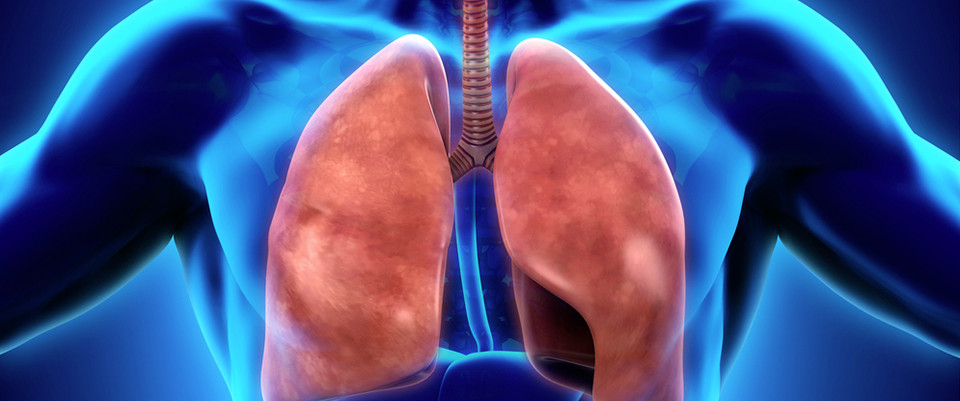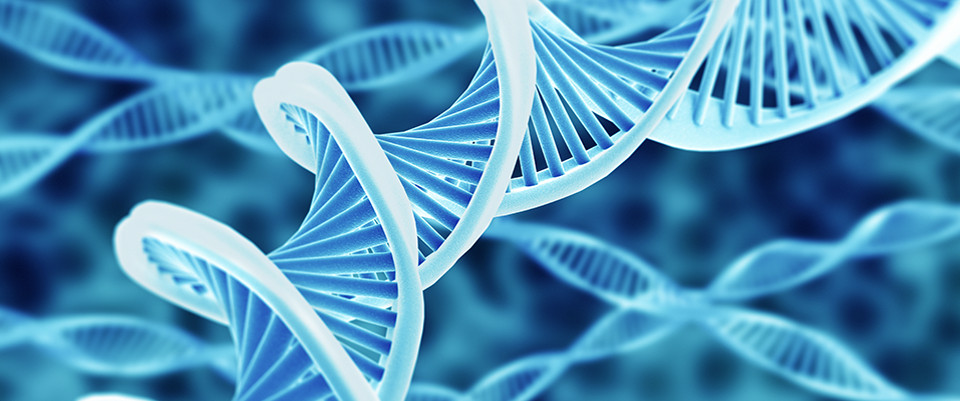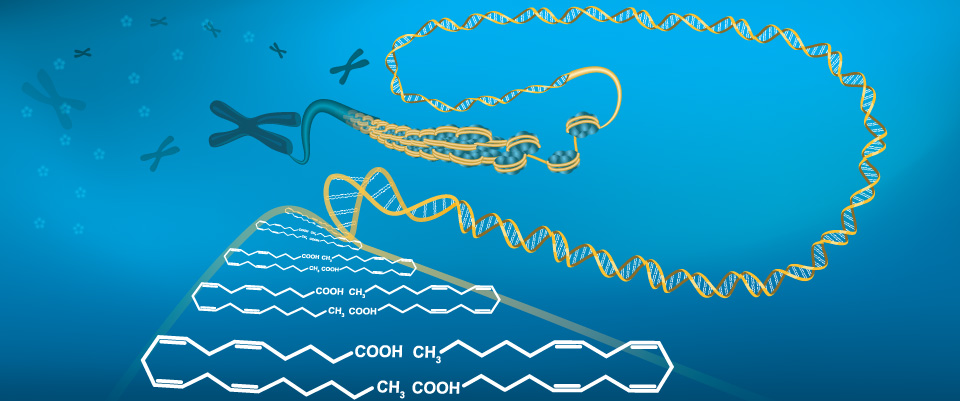PubMed
Oxidized alginate hydrogels with the GHK peptide enhance cord blood mesenchymal stem cell osteogenesis: a paradigm for metabolomics-based evaluation of biomaterial design.
Oxidized alginate hydrogels with the GHK peptide enhance cord blood mesenchymal stem cell osteogenesis: a paradigm for metabolomics-based evaluation of biomaterial design.
Acta Biomater. 2019 Feb 14;:
Authors: Klontzas ME, Reakasame S, Silva R, Morais JCF, Vernardis S, MacFarlane RJ, Heliotis M, Tsiridis E, Panoskaltsis N, Boccaccini AR, Mantalaris A
Abstract
Oxidized alginate hydrogels are appealing alternatives to natural alginate due to their favourable biodegradability profiles and capacity to self-crosslink with amine containing molecules facilitating functionalization with extracellular matrix cues, which enable modulation of stem cell fate, achieve highly viable 3-D cultures, and promote cell growth. Stem cell metabolism is at the core of cellular fate (proliferation, differentiation, death) and metabolomics provides global metabolic signatures representative of cellular status, being able to accurately identify the quality of stem cell differentiation. Herein, umbilical cord blood mesenchymal stem cells (UCB MSCs) were encapsulated in novel oxidized alginate hydrogels functionalized with the glycine-histidine-lysine (GHK) peptide and differentiated towards the osteoblastic lineage. The ADA-GHK hydrogels significantly improved osteogenic differentiation compared to gelatin-containing control hydrogels, as demonstrated by gene expression, alkaline phosphatase activity and bone extracellular matrix deposition. Metabolomics revealed the high degree of metabolic heterogeneity in the gelatin-containing control hydrogels, captured the enhanced osteogenic differentiation in the ADA-GHK hydrogels, confirmed the similar metabolism between differentiated cells and primary osteoblasts, and elucidated the metabolic mechanism responsible for the function of GHK. Our results suggest a novel paradigm for metabolomics-guided biomaterial design and robust stem cell bioprocessing. SIGNIFICANCE STATEMENT: Producing high quality engineered bone grafts is important for the treatment of critical sized bone defects. Robust and sensitive techniques are required for quality assessment of tissue-engineered constructs, which result to the selection of optimal biomaterials for bone graft development. Herein, we present a new use of metabolomics signatures in guiding the development of novel oxidised alginate-based hydrogels with umbilical cord blood mesenchymal stem cells and the glycine-histidine-lysine peptide, demonstrating that GHK induces stem cell osteogenic differentiation. Metabolomics signatures captured the enhanced osteogenesis in GHK hydrogels, confirmed the metabolic similarity between differentiated cells and primary osteoblasts, and elucidated the metabolic mechanism responsible for the function of GHK. In conclusion, our results suggest a new paradigm of metabolomics-driven design of biomaterials.
PMID: 30772514 [PubMed - as supplied by publisher]
Targeted metabolomics of whole blood using volumetric absorptive microsampling.
Targeted metabolomics of whole blood using volumetric absorptive microsampling.
Talanta. 2019 May 15;197:49-58
Authors: Kok MGM, Nix C, Nys G, Fillet M
Abstract
Volumetric absorptive microsampling (VAMS) enables the collection of small and accurate quantities of biological fluids. Therefore, this sampling technique is of great interest for volume-limited samples or serial collection of samples. In this study, we examined the potential of VAMS for targeted mass spectrometry (MS)-based metabolomics. The targeted analysis of 36 major metabolites from only 10 μL of whole blood was optimized. A design of experiments was carried out to maximize the extraction of metabolites. Moreover, critical steps in sample preparation and sample analysis were studied and characterized, such as the addition of internal standards to tips of VAMS devices before sample collection. A reversed-phase UHPLC-MS/MS method was used to analyze organic acids, whereas hydrophilic interaction chromatography (HILIC)-MS/MS was selected for the determination of amino acids. Overall, the optimum extraction solvent was acetonitrile-water in a proportion of 60:40 (v/v), providing good recoveries and resulting in the detection of all target metabolites in whole blood with good repeatability (less than 15% RSD on peak area). Furthermore, the stability of the analytes in dried whole blood, which is of critical importance in metabolomics studies, was investigated. The amino and organic acids were stable for at least 4 days when stored at room temperature. This is in contrast to the instability of these compounds in wet blood, thereby showing the great potential of VAMS in metabolomics studies.
PMID: 30771966 [PubMed - in process]
A combined targeted/untargeted LC-MS/MS-based screening approach for mammalian cell lines treated with ionic liquids: Toxicity correlates with metabolic profile.
A combined targeted/untargeted LC-MS/MS-based screening approach for mammalian cell lines treated with ionic liquids: Toxicity correlates with metabolic profile.
Talanta. 2019 May 15;197:472-481
Authors: Sanwald C, Robciuc A, Ruokonen SK, Wiedmer SK, Lämmerhofer M
Abstract
This work presents the development and validation of a quantitative HILIC UHPLC-ESI-QTOF-MS/MS method for amino acids combined with untargeted metabolic profiling of human corneal epithelial (HCE) cells after treatment with ionic liquids. The work included a preliminary metabotoxicity screening of 14 different ionic liquids, of which 9 carefully selected ionic liquids were chosen for a metabolomics study. This study is focused on the correlation between the toxicity of the ionic liquids and their metabolic profiles. The method development included the comparison of different MS/MS acquisition modes. A sequential window acquisition of all theoretical fragment ion mass spectra (SWATH) method with variable Q1 window widths and narrow Q1 target windows of 5 Da for most of the amino acids was selected as the optimal acquisition mode. Due to the absence of a true blank matrix, 13C,15N-isotopically labelled amino acids were utilized as surrogate calibrants, instead of proteinogenic amino acids. Partial least squares (PLS) analysis of the median effective concentrations (EC50) of 9 selected ionic liquids showed a correlation with their metabolic profile measured by the untargeted screening.
PMID: 30771964 [PubMed - in process]
Metabolic shift of Staphylococcus aureus under sublethal dose of methicillin in the presence of glucose.
Metabolic shift of Staphylococcus aureus under sublethal dose of methicillin in the presence of glucose.
J Pharm Biomed Anal. 2019 Feb 08;167:140-148
Authors: Rutowski J, Zhong F, Xu M, Zhu J
Abstract
Traditional strategies in developing novel drugs to treat antibiotic-resistant S. aureus have not been very successful to date, therefore, there is an urgent need for creative usage of existing agents that can treat and control S. aureus infection. This study demonstrated that a combination of glucose and a sublethal dose of antibiotic can reduce the survivability of S. aureus in a glucose concentration-dependent manner. Mass spectrometry-based targeted metabolic profiling detected massive metabolic profile shift of both methicillin-susceptible and resistant S. aureus after methicillin and glucose co-treatment. The dramatic alteration of metabolites from these metabolic pathways can be detected when 10 mg/L or higher concentration of glucose were added to methicillin treated culture. Our data also indicated that multiple biochemical metabolic pathways, including pyrimidine metabolism and valine, leucine, and isoleucine degradation showed a significant difference (p < 0.01) in comparison of control groups to glucose treatment groups. Taken together, this pilot study suggested that exogenous glucose in combination with a sublethal dose of antibiotics can disturb the metabolism of both methicillin-susceptible and resistant S. aureus, and enhance the antibiotic bactericidal effect.
PMID: 30771647 [PubMed - as supplied by publisher]
1H NMR metabolomic analysis of skin and blubber of bottlenose dolphins reveal a functional metabolic dichotomy.
1H NMR metabolomic analysis of skin and blubber of bottlenose dolphins reveal a functional metabolic dichotomy.
Comp Biochem Physiol Part D Genomics Proteomics. 2019 Feb 10;30:25-32
Authors: Misra BB, Mariel RI, Ivonne HG, Emanuel HN, Raúl DG, Cristina CR
Abstract
The common bottlenose dolphin (Tursiops truncatus) is a carnivorous cetacean thriving in marine environment that is one of the apex predators of the marine food web. They are found in coastal and estuarine ecosystems which are known to be sensitive to environmental impacts. Dolphins are considered sentinel organisms for monitoring the health of coastal marine ecosystems in their role as predators that can bioaccumulate contaminants. Although recent studies have focused on capturing the circulating metabolomes of these mammals, as well as in the context of pollutants and exposures in the marine environment, the skin and blubber are important surface and protective organs that have not been probed for metabolism. Using 1HNMR based metabolomic approach we quantified 51 metabolites belonging to 74 different metabolic pathways in the skin and blubber of stranding bottlenose dolphin samples collected from the Southern Zone coast of Yucatan Peninsula of Mexico. The results indicate that metabolism of skin and blubber metabolism are quantitatively very different. Further, using heat maps and random forest analysis, the results point to unique metabolites that are important classifiers of the tissue-type. The differential metabolic patterns, mainly linking fatty acid metabolism and ketogenic amino acids, seem to constitute a characteristic of blubber, pointing to fat synthesis and deposition. The skin showed several metabolites involved in gluconeogenic pathways, pointing towards active metabolism. The most notable pathways implicated in both tissues included: urea cycle and glutathione metabolism among others. Our 1H NMR metabolomics analysis allowed for the identification of metabolites associated with these organ types, such as pyruvic acid, arginine, ornithine, 2‑hydroxybutyric acid, 3‑hydroxyisobutyric acid, and acetic acid, as discriminatory and classifying metabolites. These results would lead to further understanding of the physiological roles of dolphin skin and blubber metabolism for better efforts in their conservation as well as useful target biopsy tissues for monitoring of dolphin health conditions in marine pollution and ecotoxicology studies.
PMID: 30771562 [PubMed - as supplied by publisher]
Breast cancer risk in relation to plasma metabolites among Hispanic and African American women.
Breast cancer risk in relation to plasma metabolites among Hispanic and African American women.
Breast Cancer Res Treat. 2019 Feb 15;:
Authors: Zhao H, Shen J, Moore SC, Ye Y, Wu X, Zanetti KA, Esteva FJ, Tripathy D, Chow WH
Abstract
PURPOSE: The metabolic etiology of breast cancer has been explored in the past several years using metabolomics. However, most of these studies only included non-Hispanic White individuals.
METHODS: To fill this gap, we performed a two-step (discovery and validation) metabolomics profiling in plasma samples from 358 breast cancer patients and 138 healthy controls. All study subjects were either Hispanics or non-Hispanic African Americans.
RESULTS: A panel of 14 identified metabolites significantly differed between breast cancer cases and healthy controls in both the discovery and validation sets. Most of these identified metabolites were lipids. In the pathway analysis, citrate cycle (TCA cycle), arginine and proline metabolism, and linoleic acid metabolism pathways were observed, and they significantly differed between breast cancer cases and healthy controls in both sets. From those 14 metabolites, we selected 9 non-correlated metabolites to generate a metabolic risk score. Increased metabolites risk score was associated with a 1.87- and 1.63-fold increased risk of breast cancer in the discovery and validation sets, respectively (Odds ratio (OR) 1.87, 95% Confidence interval (CI) 1.50, 2.32; OR 1.63, 95% CI 1.36, 1.95).
CONCLUSIONS: In summary, our study identified metabolic profiles and pathways that significantly differed between breast cancer cases and healthy controls in Hispanic or non-Hispanic African American women. The results from our study might provide new insights on the metabolic etiology of breast cancer.
PMID: 30771047 [PubMed - as supplied by publisher]
Identification Potential Plasma Biomarkers and Metabolic Dysfunction for Unstable Angina Pectoris and Its Complication based on Global Metabolomics.
Related Articles
Identification Potential Plasma Biomarkers and Metabolic Dysfunction for Unstable Angina Pectoris and Its Complication based on Global Metabolomics.
Biosci Rep. 2019 Feb 15;:
Authors: Wang J, Xu W, Zhao H, Chen J, Zhu B, Li X, Deng D, Wang J, Liu J, Yu Y, Xiao H, Wang W
Abstract
Unstable angina pectoris (UA) is one of the most dangerous clinical symptoms of acute coronary syndrome due to the risk of myocardial ischemia, which can lead to high morbidity and mortality worldwide. Though there are many advantages in understanding the pathophysiology of UA, the identification of biomarkers for the diagnosis, prognosis, and treatment of UA remains a challenge in the clinic. A global metabolomics research based on ultra performance liquid chromatography (UPLC) combined with time of flight mass spectrometry (Q-TOF/MS) was performed to discover the metabolic profile of health controls, UA patients, and UA patients with diabetes mellitus (DM), and screen for potential biomarkers. Twenty-seven potential biomarkers were determined using pattern recognition. These biomarkers, which include free fatty acids, amino acids, lysoPE and lysoPC species, and organic acids, can benefit the clinical diagnosis of UA. Pathway analysis indicated that arginine and proline metabolism, glycerophospholipid metabolism, and purine metabolism were affected in the UA patients, uniquely. Additionally, alterations in the metabolic signatures between UA and UA complicated diabetes mellitus (DM) were also explored. As a result, six differential metabolites with an area under the curve (AUC) of more than 0.85 were identified as biomarkers for the diagnosis of UA and UA complicated with DM. Pathway analysis implied tryptophan metabolism was a key metabolic pathway in UA patients with DM, which provides new insights into the pathological study and drug discovery of UA.
PMID: 30770400 [PubMed - as supplied by publisher]
Metabolomics Approaches for the Diagnosis and Understanding of Kidney Diseases.
Related Articles
Metabolomics Approaches for the Diagnosis and Understanding of Kidney Diseases.
Metabolites. 2019 Feb 14;9(2):
Authors: Abbiss H, Maker GL, Trengove RD
Abstract
Diseases of the kidney are difficult to diagnose and treat. This review summarises the definition, cause, epidemiology and treatment of some of these diseases including chronic kidney disease, diabetic nephropathy, acute kidney injury, kidney cancer, kidney transplantation and polycystic kidney diseases. Numerous studies have adopted a metabolomics approach to uncover new small molecule biomarkers of kidney diseases to improve specificity and sensitivity of diagnosis and to uncover biochemical mechanisms that may elucidate the cause and progression of these diseases. This work includes a description of mass spectrometry-based metabolomics approaches, including some of the currently available tools, and emphasises findings from metabolomics studies of kidney diseases. We have included a varied selection of studies (disease, model, sample number, analytical platform) and focused on metabolites which were commonly reported as discriminating features between kidney disease and a control. These metabolites are likely to be robust indicators of kidney disease processes, and therefore potential biomarkers, warranting further investigation.
PMID: 30769897 [PubMed]
Identification of Key Aroma Compounds in Type I Sourdough-Based Chinese Steamed Bread: Application of Untargeted Metabolomics Analysisp.
Related Articles
Identification of Key Aroma Compounds in Type I Sourdough-Based Chinese Steamed Bread: Application of Untargeted Metabolomics Analysisp.
Int J Mol Sci. 2019 Feb 14;20(4):
Authors: Yan B, Sadiq FA, Cai Y, Fan D, Zhang H, Zhao J, Chen W
Abstract
Untargeted metabolomics is a valuable tool to analyze metabolite profiles or aroma fingerprints of different food products. However, less attention has been paid to determining the aroma characteristics of Chinese steamed breads (CSBs) by using this approach. The aim of this work was to evaluate the key aroma compounds and their potential generation pathway in Chinese steamed bread produced with type I sourdough by a metabolomics approach. Based on the aroma characteristics analysis, CSBs produced with type I sourdough and baker's yeast were clearly distinguishable by principal component analysis (PCA) scores plot. A total of 13 compounds in sourdough-based steamed breads were given the status of discriminant markers through the untargeted metabolomics analysis. According to the odor activity values (OAVs) of discriminant aroma markers, ethyl acetate (fruity), ethyl lactate (caramel-like), hexyl acetate (fruity), (E)-2-nonenal (fatty) and 2-pentylfuran (fruity) were validated as the key volatile compounds in the breads produced with type I sourdough as compared to the baker's yeast leavened steamed bread. The metabolite analysis in proofed dough indicated that esters are mainly generated by the reaction between acid and alcohol during steaming, and aldehydes are derived from the oxidation of palmitoleic acid and linoleic acid during proofing and steaming.
PMID: 30769815 [PubMed - in process]
Greek Graviera Cheese Assessment through Elemental Metabolomics-Implications for Authentication, Safety and Nutrition.
Related Articles
Greek Graviera Cheese Assessment through Elemental Metabolomics-Implications for Authentication, Safety and Nutrition.
Molecules. 2019 Feb 14;24(4):
Authors: Danezis G, Theodorou C, Massouras T, Zoidis E, Hadjigeorgiou I, Georgiou CA
Abstract
This study presents the comprehensive elemental profile of Greek Graviera (Gruyère) cheeses. In total, 105 samples from nine different geographic regions produced from sheep, goat and cow milk and their mixtures were assessed. Elemental signatures of 61 elements were investigated for determination of geographic origin and milk type. Regional and milk type classification through Linear Discriminant Analysis was successful for almost all cases, while a less optimistic cross validation exercise presented lower classification rates. That points to further research using a much larger sample set, increasing confidence for cheese authentication utilizing also bioinformatics tools under development. This is the first study reporting signatures of 61 elements in dairy products including all sixteen rare earth elements and all seven precious metals. Safety and quality were assessed regarding toxic and nutritive elements. According to both EU and USA regulations and directives, Graviera is a nutritional source for trace and macro elements with low levels of toxic elements.
PMID: 30769769 [PubMed - in process]
A strategy for validating concentrations of oxylipin standards for external calibration.
A strategy for validating concentrations of oxylipin standards for external calibration.
Prostaglandins Other Lipid Mediat. 2019 Feb 12;:
Authors: Hartung NM, Mainka M, Kampschulte N, Ostermann AI, Schebb NH
Abstract
Quantitative analysis of oxylipins by means of chromatography/mass spectrometry is based on (external) calibration with standard compounds. Therefore, the quality of analytical standards is of fundamental importance for accurate results. Recently launched certified standards with an assured concentration within a narrow range are useful tools for this purpose. However, such standards are only available for a few compounds. Based on the exemplary comparison of certified with none certified standards we suggest a tiered approach to validate and control the concentrations when preparing an external calibration based on non-certified oxylipin standards. Concentrations are evaluated by means of liquid chromatography negative electrospray ionization mass spectrometry (LC-ESI(-)-MS) in selected ion monitoring mode and UV spectroscopy (235 nm). Based on the suggested approach, more than 50% of the standards in our calibration mix could be validated. Though most of the non-certified standards are of good quality several oxylipin concentrations differ considerably demonstrating that a quality control strategy as suggested here is a mandatory prerequisite for quantitative oxylipin metabolomics.
PMID: 30769102 [PubMed - as supplied by publisher]
Arabidopsis RCD1 coordinates chloroplast and mitochondrial functions through interaction with ANAC transcription factors.
Arabidopsis RCD1 coordinates chloroplast and mitochondrial functions through interaction with ANAC transcription factors.
Elife. 2019 Feb 15;8:
Authors: Shapiguzov A, Vainonen JP, Hunter K, Tossavainen H, Tiwari A, Järvi S, Hellman M, Aarabi F, Alseekh S, Wybouw B, Van Der Kelen K, Nikkanen L, Krasensky-Wrzaczek J, Sipari N, Keinänen M, Tyystjärvi E, Rintamäki E, De Rybel B, Salojärvi J, van Breusegem F, Fernie AR, Brosché M, Permi P, Aro EM, Wrzaczek M, Kangasjarvi J
Abstract
Reactive oxygen species (ROS)-dependent signaling pathways from chloroplasts and mitochondria merge at the nuclear protein RADICAL-INDUCED CELL DEATH1 (RCD1). RCD1 interacts in vivo and suppresses the activity of the transcription factors ANAC013 and ANAC017, which mediate a ROS-related retrograde signal originating from mitochondrial complex III. Inactivation of RCD1 leads to increased expression of mitochondrial dysfunction stimulon (MDS) genes regulated by ANAC013 and ANAC017. Accumulating MDS gene products, including alternative oxidases (AOXs), affect redox status of the chloroplasts, leading to changes in chloroplast ROS processing and increased protection of photosynthetic apparatus. ROS alter the abundance, thiol redox state and oligomerization of the RCD1 protein in vivo, providing feedback control on its function. RCD1-dependent regulation is linked to chloroplast signaling by 3'-phosphoadenosine 5'-phosphate (PAP). Thus, RCD1 integrates organellar signaling from chloroplasts and mitochondria to establish transcriptional control over the metabolic processes in both organelles.
PMID: 30767893 [PubMed - as supplied by publisher]
Role of metabolomics in identification of biomarkers related to food intake.
Role of metabolomics in identification of biomarkers related to food intake.
Proc Nutr Soc. 2019 Feb 15;:1-8
Authors: Collins C, McNamara AE, Brennan L
Abstract
Dietary assessment methods including FFQ and food diaries are associated with many measurement errors including energy under-reporting and incorrect estimation of portion sizes. Such errors can lead to inconsistent results especially when investigating the relationship between food intake and disease causation. To improve the classification of a person's dietary intake and therefore clarify proposed links between diet and disease, reliable and accurate dietary assessment methods are essential. Dietary biomarkers have emerged as a complementary approach to the traditional methods, and in recent years, metabolomics has developed as a key technology for the identification of new dietary biomarkers. The objective of this review is to give an overview of the approaches used for the identification of biomarkers and potential use of the biomarkers. Over the years, a number of strategies have emerged for the discovery of dietary biomarkers including acute and medium term interventions and cross-sectional/cohort study approaches. Examples of the different approaches will be presented. Concomitant with the focus on single biomarkers of specific foods, there is an interest in the development of biomarker signatures for the identification of dietary patterns. In the present review, we present an overview of the techniques used in food intake biomarker discover, including the experimental approaches used and challenges faced in the field. While significant progress has been achieved in the field of dietary biomarkers in recent years, a number of challenges remain. Addressing these challenges will be key to ensure success in implementing use of dietary biomarkers.
PMID: 30767789 [PubMed - as supplied by publisher]
Metabolomic diagnostics and human digital image.
Metabolomic diagnostics and human digital image.
Per Med. 2019 Feb 15;:
Authors: Balashova EE, Lokhov PG, Ponomarenko EA, Markin SS, Lisitsa AV, Archakov AI
Abstract
The existing clinical laboratory practice has limitations in terms of specificity and sensitivity of diagnosis, making the introduction of new methods in medicine more topical. Application of 'omics' technologies, especially metabolomics, allows overcoming these limitations. The composition of blood metabolites reflects the physical state of an organism at the molecular level. The analysis of blood metabolome can serve as effective means of diagnosis, implementation of which in healthcare is timely and relevant. This paper demonstrates the versatility of metabolomic diagnostics, its applicability to various diseases. We discussed the standard of human digital image, which includes the metabolomic data sufficient to make an accurate assessment of general health and carry out precision diagnostics of a wide range of diseases.
PMID: 30767631 [PubMed - as supplied by publisher]
Metabolic responses to potassium availability and waterlogging reshape respiration and carbon use efficiency in oil palm.
Related Articles
Metabolic responses to potassium availability and waterlogging reshape respiration and carbon use efficiency in oil palm.
New Phytol. 2019 Feb 15;:
Authors: Cui J, Davanture M, Zivy M, Lamade E, Tcherkez G
Abstract
Oil palm is by far the major oil-producing crop at the global scale, with ≈62 Mt oil produced each year. This species is a strong potassium (K)-demanding species cultivated in regions where soil K availability is generally low and waterlogging due to tropical heavy rains can limit further nutrient absorption. However, the metabolic effects of K and waterlogging have never been assessed precisely. Here, we examined the metabolic response of oil palm saplings in the greenhouse under controlled conditions (nutrient composition with low or high K availability, with or without waterlogging), using gas exchange, metabolomics and proteomics analyses. Our results show that both low K and waterlogging have a detrimental effect on photosynthesis but stimulate leaf respiration, with differential accumulation of typical metabolic intermediates and enzymes of the Krebs cycle and alternative catabolic pathways. In addition, we found a strong relationship between metabolic composition, the rate of leaf dark respiration, and cumulated respiratory loss. Advert environmental conditions (here, low K and waterlogging) thus have an enormous impact on respiration in oil palm. Leaf metabolome and proteome appear to be good predictors of carbon balance, and open avenues for cultivation biomonitoring using functional genomics technologies. This article is protected by copyright. All rights reserved.
PMID: 30767245 [PubMed - as supplied by publisher]
Pharmacometabolomic prediction of individual differences of gastrointestinal toxicity complicating myelosuppression in rats induced by irinotecan.
Related Articles
Pharmacometabolomic prediction of individual differences of gastrointestinal toxicity complicating myelosuppression in rats induced by irinotecan.
Acta Pharm Sin B. 2019 Jan;9(1):157-166
Authors: Gao Y, Li W, Chen J, Wang X, Lv Y, Huang Y, Zhang Z, Xu F
Abstract
Pharmacometabolomics has been already successfully used in toxicity prediction for one specific adverse effect. However in clinical practice, two or more different toxicities are always accompanied with each other, which puts forward new challenges for pharmacometabolomics. Gastrointestinal toxicity and myelosuppression are two major adverse effects induced by Irinotecan (CPT-11), and often show large individual differences. In the current study, a pharmacometabolomic study was performed to screen the exclusive biomarkers in predose serums which could predict late-onset diarrhea and myelosuppression of CPT-11 simultaneously. The severity and sensitivity differences in gastrointestinal toxicity and myelosuppression were judged by delayed-onset diarrhea symptoms, histopathology examination, relative cytokines and blood cell counts. Mass spectrometry-based non-targeted and targeted metabolomics were conducted in sequence to dissect metabolite signatures in predose serums. Eventually, two groups of metabolites were screened out as predictors for individual differences in late-onset diarrhea and myelosuppression using binary logistic regression, respectively. This result was compared with existing predictors and validated by another independent external validation set. Our study indicates the prediction of toxicity could be possible upon predose metabolic profile. Pharmacometabolomics can be a potentially useful tool for complicating toxicity prediction. Our findings also provide a new insight into CPT-11 precision medicine.
PMID: 30766787 [PubMed]
Distinct Metabolic Endotype Mirroring Acute Respiratory Distress Syndrome (ARDS) Subphenotype and its Heterogeneous Biology.
Related Articles
Distinct Metabolic Endotype Mirroring Acute Respiratory Distress Syndrome (ARDS) Subphenotype and its Heterogeneous Biology.
Sci Rep. 2019 Feb 14;9(1):2108
Authors: Viswan A, Ghosh P, Gupta D, Azim A, Sinha N
Abstract
Predisposing aetiologies in Acute Respiratory Distress Syndrome (ARDS), perpetuates to heterogeneous clinical course hampering therapeutic response. Therefore, physiological variables need to be identified by stratifying ARDS subphenotypes and endotype, to target ARDS heterogeneity. The present study is stimulated by the fact that the ARDS heterogeneity arises from diverse pathophysiological changes leading to distinct ARDS endotypes characterized by perturbed biological mechanism which can be exploited in terms of metabolic profile by metabolomics. Biological endotypes using (n = 464 patients and controls), mBALF and serum samples were identified by high - resolution NMR spectroscopy from two clinically diagnosed ARDS subtypes grouped under mild, moderate and severe ARDS as subphenotype1and pulmonary and extra - pulmonary ARDS as subphenotype2. The identified mBALF endotypes (isoleucine, leucine, valine, lysine/arginine, tyrosine, threonine) and serum endotypes (proline, glutamate, phenylalanine, valine) in both subphenotypes by statistical analysis were tested for their reproducibility and robustness. By combining metabolic endotypes with clinical based mortality score (APACHE and SOFA) added to their predictive performance as ARDS mortality predictors. Thus, a comprehensive set of mBALF endotypes representing compartmentalized lung milieu and serological endotypes representing systemic markers of ARDS subtypes were validated. The interlinked biological pathway of these disease specific endotype further elucidated their role as candidate biomarker in governing ARDS heterogeneous biology.
PMID: 30765824 [PubMed - in process]
Identification and profiling of narrow-leafed lupin (Lupinus angustifolius) microRNAs during seed development.
Related Articles
Identification and profiling of narrow-leafed lupin (Lupinus angustifolius) microRNAs during seed development.
BMC Genomics. 2019 Feb 14;20(1):135
Authors: DeBoer K, Melser S, Sperschneider J, Kamphuis LG, Garg G, Gao LL, Frick K, Singh KB
Abstract
BACKGROUND: Whilst information regarding small RNAs within agricultural crops is increasing, the miRNA composition of the nutritionally valuable pulse narrow-leafed lupin (Lupinus angustifolius) remains unknown.
RESULTS: By conducting a genome- and transcriptome-wide survey we identified 7 Dicer-like and 16 Argonaute narrow-leafed lupin genes, which were highly homologous to their legume counterparts. We identified 43 conserved miRNAs belonging to 16 families, and 13 novel narrow-leafed lupin-specific miRNAs using high-throughput sequencing of small RNAs from foliar and root and five seed development stages. We observed up-regulation of members of the miRNA families miR167, miR399, miR156, miR319 and miR164 in narrow-leafed lupin seeds, and confirmed expression of miR156, miR166, miR164, miR1507 and miR396 using quantitative RT-PCR during five narrow-leafed lupin seed development stages. We identified potential targets for the conserved and novel miRNAs and were able to validate targets of miR399 and miR159 using 5' RLM-RACE. The conserved miRNAs are predicted to predominately target transcription factors and 93% of the conserved miRNAs originate from intergenic regions. In contrast, only 43% of the novel miRNAs originate from intergenic regions and their predicted targets were more functionally diverse.
CONCLUSION: This study provides important insights into the miRNA gene regulatory networks during narrow-leafed lupin seed development.
PMID: 30764773 [PubMed - in process]
Glycerol supports growth of the Trypanosoma brucei bloodstream forms in the absence of glucose: Analysis of metabolic adaptations on glycerol-rich conditions.
Related Articles
Glycerol supports growth of the Trypanosoma brucei bloodstream forms in the absence of glucose: Analysis of metabolic adaptations on glycerol-rich conditions.
PLoS Pathog. 2018 11;14(11):e1007412
Authors: Pineda E, Thonnus M, Mazet M, Mourier A, Cahoreau E, Kulyk H, Dupuy JW, Biran M, Masante C, Allmann S, Rivière L, Rotureau B, Portais JC, Bringaud F
Abstract
The bloodstream forms of Trypanosoma brucei (BSF), the parasite protist causing sleeping sickness, primarily proliferate in the blood of their mammalian hosts. The skin and adipose tissues were recently identified as additional major sites for parasite development. Glucose was the only carbon source known to be used by bloodstream trypanosomes to feed their central carbon metabolism, however, the metabolic behaviour of extravascular tissue-adapted parasites has not been addressed yet. Since the production of glycerol is an important primary function of adipocytes, we have adapted BSF trypanosomes to a glucose-depleted but glycerol-rich culture medium (CMM_Glyc/GlcNAc) and compared their metabolism and proteome to those of parasites grown in standard glucose-rich conditions (CMM_Glc). BSF were shown to consume 2-folds more oxygen per consumed carbon unit in CMM_Glyc/GlcNAc and were 11.5-times more sensitive to SHAM, a specific inhibitor of the plant-like alternative oxidase (TAO), which is the only mitochondrial terminal oxidase expressed in BSF. This is consistent with (i) the absolute requirement of the mitochondrial respiratory activity to convert glycerol into dihydroxyacetone phosphate, as deduced from the updated metabolic scheme and (ii) with the 1.8-fold increase of the TAO expression level compared to the presence of glucose. Proton NMR analysis of excreted end products from glycerol and glucose metabolism showed that these two carbon sources are metabolised through the same pathways, although the contributions of the acetate and succinate branches are more important in the presence of glycerol than glucose (10.2% versus 3.4% of the excreted end products, respectively). In addition, metabolomic analyses by mass spectrometry showed that, in the absence of glucose, 13C-labelled glycerol was incorporated into hexose phosphates through gluconeogenesis. As expected, RNAi-mediated down-regulation of glycerol kinase expression abolished glycerol metabolism and was lethal for BSF grown in CMM_Glyc/GlcNAc. Interestingly, BSF have adapted their metabolism to grow in CMM_Glyc/GlcNAc by concomitantly increasing their rate of glycerol consumption and decreasing that of glucose. However, the glycerol kinase activity was 7.8-fold lower in CMM_Glyc/GlcNAc, as confirmed by both western blotting and proteomic analyses. This suggests that the huge excess in glycerol kinase that is not absolutely required for glycerol metabolism, might be used for another yet undetermined non-essential function in glucose rich-conditions. Altogether, these data demonstrate that BSF trypanosomes are well-adapted to glycerol-rich conditions that could be encountered by the parasite in extravascular niches, such as the skin and adipose tissues.
PMID: 30383867 [PubMed - indexed for MEDLINE]
Detailed Characterization of Monoclonal Antibody Receptor Interaction Using Affinity Liquid Chromatography Hyphenated to Native Mass Spectrometry.
Related Articles
Detailed Characterization of Monoclonal Antibody Receptor Interaction Using Affinity Liquid Chromatography Hyphenated to Native Mass Spectrometry.
Anal Chem. 2017 05 16;89(10):5404-5412
Authors: Gahoual R, Heidenreich AK, Somsen GW, Bulau P, Reusch D, Wuhrer M, Haberger M
Abstract
We report on the online coupling of FcRn affinity liquid chromatography (LC) with electrospray ionization mass spectrometry (ESI-MS) in native conditions to study the influence of modifications on the interaction of recombinant mAbs with the immobilized FcRn receptor domain. The analysis conditions were designed to fit the requirements of both affinity LC and ESI-MS. The mobile phase composition was optimized to maintain the proteins studied in native conditions and enable sharp pH changes in order to mimic properly IgGs Fc domain/FcRn receptor interaction. Mobile phase components needed to be sufficiently volatile to achieve native MS analysis. MS data demonstrated the conservation of the pseudonative form of IgGs and allowed identification of the separated variants. Native FcRn affinity LC-ESI-MS was performed on a therapeutic mAb undergoing various oxidation stress. Native MS detection was used to determine the sample oxidation level. Lower retention was observed for mAbs oxidized variants compared to their intact counterparts indicating decreased affinities for the receptor. This methodology proved to be suitable to identify and quantify post-translational modifications at native protein level in order to correlate their influence on the binding to the FcRn receptor. Native FcRn affinity LC-ESI-MS can tremendously reduce the time required to assess the biological relevance of the IgG microheterogeneities thus providing valuable information for biopharmaceutical research and development.
PMID: 28398745 [PubMed - indexed for MEDLINE]











